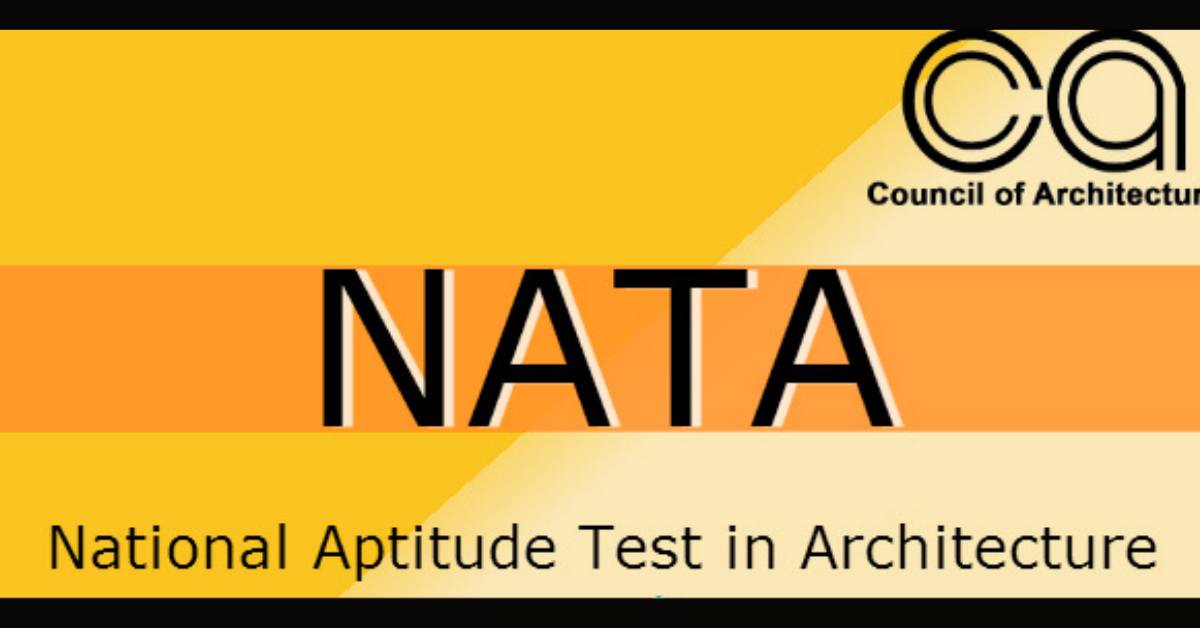NATA Exam : Exclusive Highlight Of The Exam
NATA Exam is the National Aptitude Test in Architecture conducted by the National Institute of Advanced Studies in Architecture (NIASA), which is a body of the Council of Architecture, New Delhi. It is a national-level undergraduate exam conducted for admission to 5 years of B.Arch. program.
Candidates can get admission to Government, Government -aided, Private unaided, universities, Deemed university, colleges, or institutes across India. From 2020 this exam is conducted twice a year and the candidate can appear in both the exam. The best of two scores will be accepted or considered for admission.
The exam is divided into two parts. Part A (Drawing) is conducted offline and Part B (MCQ) is conducted online.
NATA Exam: Highlights
|
Feature |
Details |
| Exam Name | National Aptitude Test in Architecture (NATA) |
| Conducting Body | Council of Architecture (CoA) |
| Exam Frequency | Twice a year |
| Exam Level | National |
| Exam Language | English |
| Exam Mode | Online & Offline |
| Exam Duration | 3 hours 15 minutes |
| Score Validity | 1 year |
| Application Fes | Rs. 2000 |
| Number of Participating College | 328 |
| Number of Registration | 40,000 + |
| Official Website | http://nata.in/ |
NATA Exam: Proposed Month
Council of Architecture releases the notification of the NATA Exam. Candidate aspiring for B.Arch. courses should keep an eagle on the NATA notifications.
|
NATA Event |
Tentative Month- 1ST Exam |
Tentative Month-2nd Exam |
| NATA Notification | January | January |
| NATA Admit Card | April | June |
| NATA Exam | August | August |
| NATA Result | To be announced soon | To be announced soon |

Eligibility Criteria
|
Criteria |
Eligibility |
| Age Limit | No age limit is set for the NATA exam by CoA. Minimum of 17 years age needed. |
| Educational Qualification | Candidate Appearing or Passed in class 10+2 exam or its equivalent |
| Compulsory Subjects | Physics, Chemistry & Mathematics compulsory subjects in 10+2 |
| Minimum Marks | 50% marks in Physics, Chemistry & Mathematics and 50% aggregate marks in 10+2 |
Note: Diploma Holder is not eligible for admission to Architecture program from 2019 onwards.
|
Feature |
Highlights |
| Mode | Offline & Online |
| Maximum Marks | 200 |
| Duration | 3 hours 15 minutes |
| Number of Sections | 2 |
| Exam Language | English |
| Marking Scheme | 1.5 marks awarded for each correct answer |
| Negative Marking | No |
Subject-Wise Exam Pattern
| Parts | Sections | Number of Question | Maximum Marks | Mode of Exam | Duration |
| Part A (Offline) | Drawing Test | 3 | 2×35 & 1X55=125 | Paper & Pencil | 135 minutes |
| Break Period 15 Minutes
|
|||||
| Part B (Online) | PCM | 15 | 1.5X15=22.5 | MCQ | 45 minutes |
| General Aptitude | 35 | 1.5X35=52.5 | MCQ | ||
| Total | 53 | 200 | 180 minutes | ||
Government colleges accepting NATA Score
- Maharaja Sayajirao University of Baroda, Vadodara
- Andhra University College of Engineering, Visakhapatnam
- Dayalbagh Educational Institute, Agra
- Guru Govind Singh Indraprastha University, Delhi
- MGR Educational and Research Institute, Chennai
- Sir JJ College of Architecture, Mumbai
- Shri Mata Vaishno Devi University, Katra
- Zakir Husain College of Engineering and Technology, Aligarh Muslim University, Aligarh
- Rajiv Gandhi Institute of Technology, Kottayam
- Gautam Buddha University, Greater Noida.
Getting into a good college is a dream, you need lots of planning and research.
Career Planning plays an important role in shaping your career, so is the planning to choose the best suitable option for yourself. You need to focus on various aspects before jumping into a final decision.
Career path analysis helps you in getting the best road map. Get your career assessment test by appearing for the free student profiling process. https://eduxact.edumilestones.com/

Click the link below and get an exhaustive career report and book for a free counseling session. For Studying abroad in 15000+ across 20+ Countries visit the mentioned link.
Click: Start Study Abroad Profiling to get access to 15000+ Universities across 20+ Countries
Please share your valuable inputs regarding the article. Also, help me develop other information guides by giving your suggestions.
You can comment in the section below for sharing your thoughts.

NATA Exam : Exclusive Highlight Of The Exam Read More »

